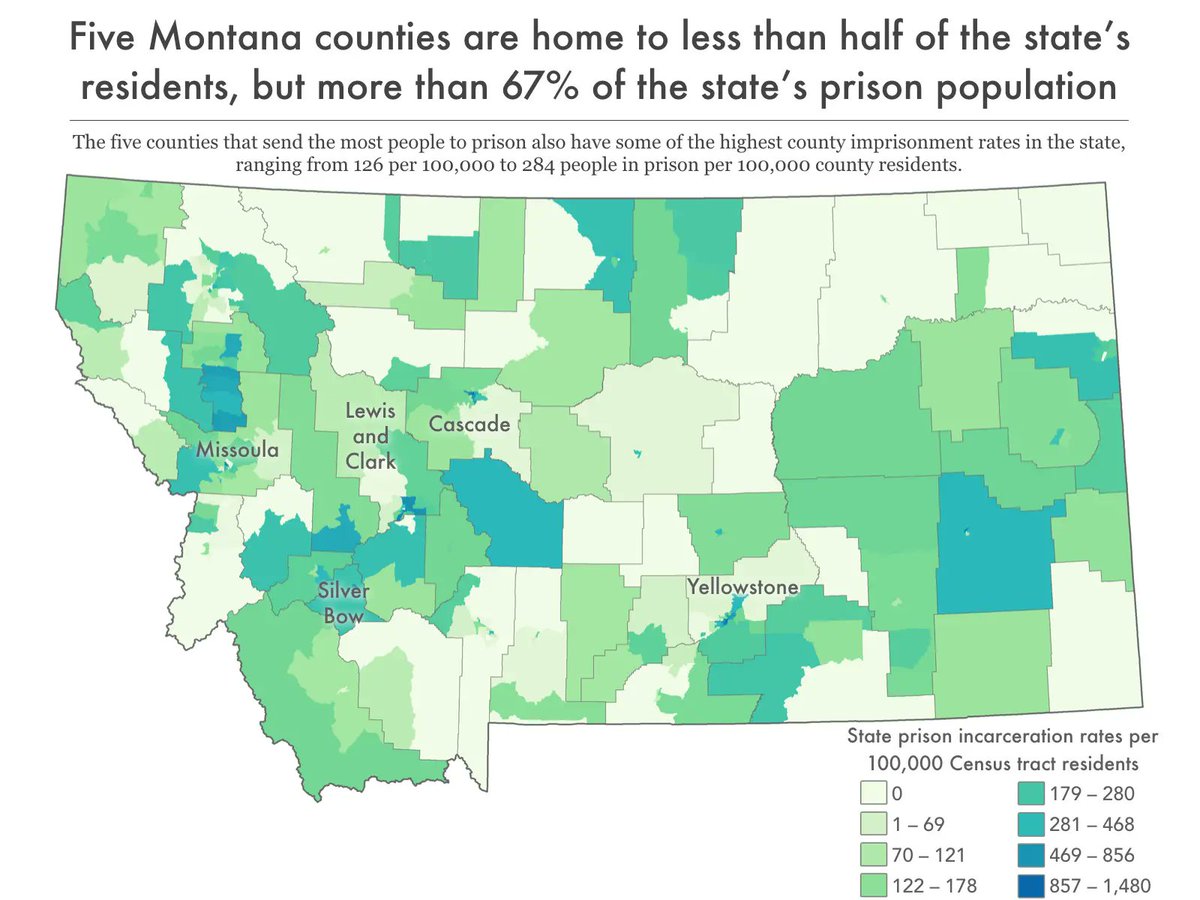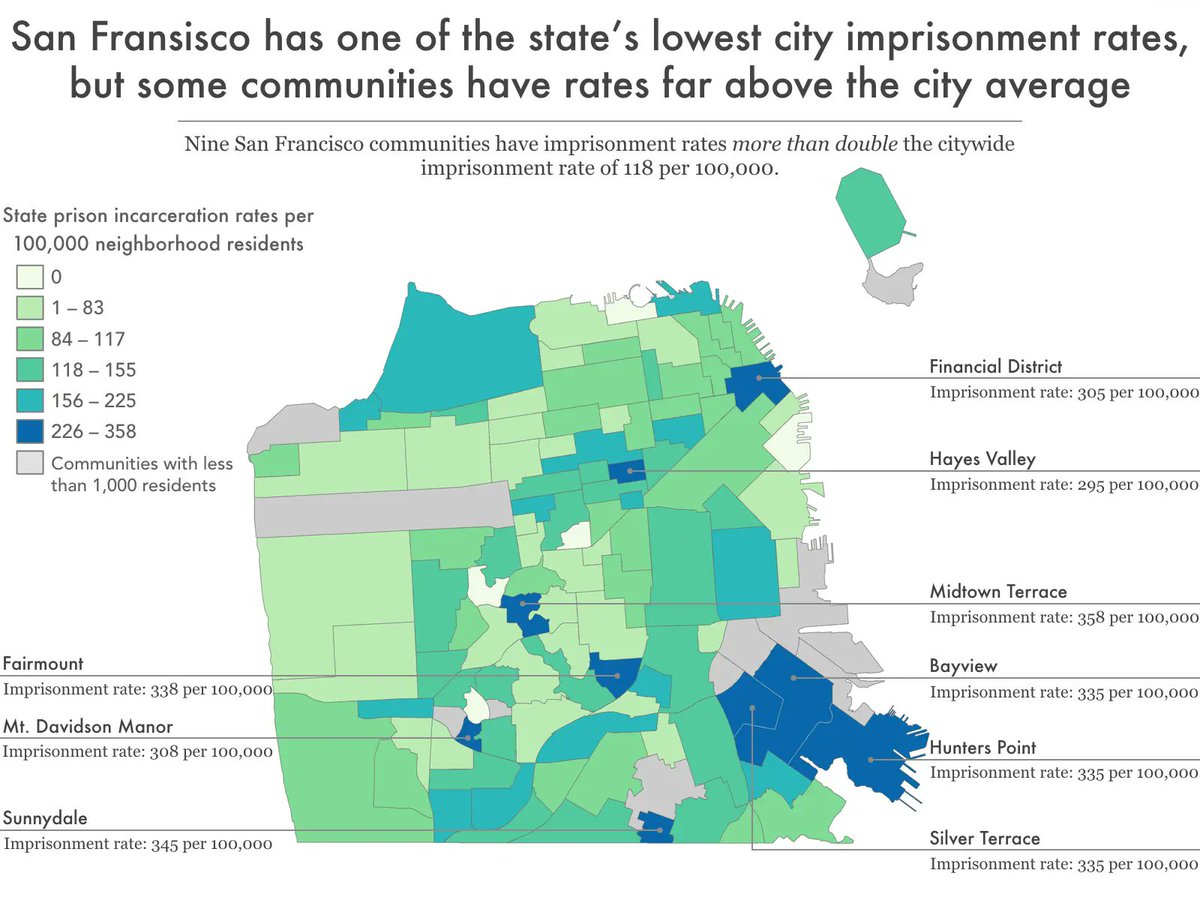
NEW: We map where people in #Montana prisons come from, going (where possible) down to the neighborhood level. This is the 12th installment in our series of reports about the geography of mass incarceration. #MTNews #MTPol /1 



ICYMI, we also have reports about:
California
Colorado
Connecticut
Delaware
Maryland
Nevada
New Jersey
New York
Pennsylvania
Virginia
Washington
See them here: prisonpolicy.org/origin/
California
Colorado
Connecticut
Delaware
Maryland
Nevada
New Jersey
New York
Pennsylvania
Virginia
Washington
See them here: prisonpolicy.org/origin/
Our reports include download-able data tables of incarceration data by city, county, zip code, Census tract, state legislative district, and more.
The reports give researchers the data they need to study how incarceration tracks with other indicators of community health.
The reports give researchers the data they need to study how incarceration tracks with other indicators of community health.
Why these 12 states? These are the states that have ended the practice of #prisongerrymandering. Ending prison gerrymandering requires (for complicated reasons) creating accessible tables of anonymized residence data for incarcerated people.
Prison gerrymandering is the practice of drawing state or city legislative districts around large prisons and pretending that the people inside are legitimate constituents. It should be abolished everywhere. We have a whole website about it here:
prisonersofthecensus.org
prisonersofthecensus.org
• • •
Missing some Tweet in this thread? You can try to
force a refresh











